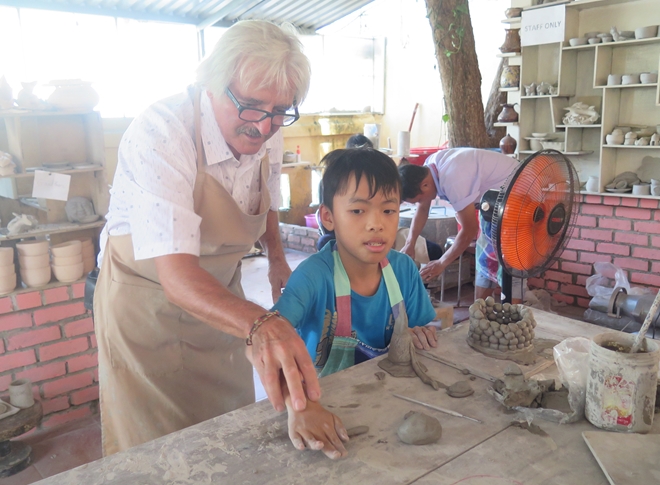French artist teaches Raku pottery to Vietnamese youths with disabilities
- Celebrate new lunar year with world renowned Swedish artist
- Korea introduces artworks of four Vietnamese artists
- Private collection of People’s Artist displayed in Hanoi
The training courses of the French raku pottery artist take place in Hi Vong (Hope) Center in Hue with the participations of many physically and mentally challenged students. Olivier Oet started his first training course in 2012.
Olivier Oet want to teach the students the most basic raku pottery techniques so that they can produce their own work, as well as to diversify the center’s homemade crafts and products, the sale of which goes directly to help the residents living there.
 |
| French artist teaches Raku pottery to Vietnamese youths with disabilities. |
Considering the students’ disabilities, language and cultural barriers, it was a real challenge for Oet to make his instructions understood, though he managed to learn some sign language and was aided by a local assistant.
Some more mentally challenged students were unable to learn the art, and simply kneaded the clay, but even this served as a meditative and artistic exercize.Oet also had much difficulty searching for the right clay sources and working out solutions to cope with Hue’s imminent stormy weather.
Oet is confident that the students’ products will attract clients. He also hopes that the kiln will be open to tourists who will then be able to to make raku pottery souvenirs of their own on their visits to the center.
Raku firing is an incredible ancient Japanese ceramics technique that has been used for centuries. Here's how to use it on your own work to create one-off wonderful pieces.
The history of Raku dates as far back as the 16th century and it was said that the special type of earthenware was first invented for a tea ceremony in Kyoto. Indeed Raku actually means ‘pleasure’ or ‘enjoyment’. Traditional Raku pottery is also known to have been used by the Zen Buddhist masters who liked its simple naturalness.Raku became popular with American potters in the late 1950s with the help of Paul Soldner. Americans kept the general firing process, that is, heating the pottery quickly to high temperatures and cooling it quickly, but continued to form their own unique style of raku.

